Nel 1966,
l'astronomo Carl Sagan, per facilitare la comprensione
di eventi dilatati in tempi lunghissimi,
pubblicò il Calendario Cosmico.
L'intera storia dell'Universo dal Big Bang a oggi,
comparata a un anno solare.
Miliardi di anni compressi tra il 1° gennaio
e la mezzanotte del 31 dicembre.
Analogamente, si può immaginare in scala
una storia compatta della vita.
Il 1° gennaio, non appena le condizioni ambientali lo permettono,
ha inizio la vita sulla Terra.
Subito dopo, compare il primo replicante a base di DNA,
l'antenato comune di tutte le forme di vita esistenti.
Successivamente, i primi cianobatteri determinano la fotosintesi e l'atmosfera
che, satura di ossigeno di scarto, avvelena quasi tutti gli organismi precedenti.
Una catastrofe per tutte le forme di vita esistenti,
ma, allo stesso tempo, una benedizione per il futuro genere umano.
Il 27 maggio, le prime cellule con il nucleo.
Il 2 di novembre, i primi organismi pluricellulari.
Fino alla fine di ottobre,
la vita sulla Terra è costituita solo da organismi monocellulari.
L'8 di novembre, i protocordati, antenati dei vertebrati.
Il 15 novembre, il DNA genera le piante.
Il 24 novembre, i vertebrati si adattano alla terraferma;
prima, la vita era stata quasi esclusivamente acquatica.
Il 9 di dicembre, inizia l'era dei dinosauri,
che finisce bruscamente il giorno prima di Natale, verso sera.
Il 26 dicembre, i primati si diversificano dai mammiferi.
È il 31 dicembre, l'ultimo giorno dell'anno,
e alle 10 del mattino si evolve l'antenato comune tra noi e gli scimpanzé.
Solo alle 23 e 32 minuti nasce in Africa la specie Homo sapiens.
Alle 23 e 58 minuti ancora non c'è segno di civiltà.
Alle 23, 58 minuti e 20 secondi finisce l'ultima glaciazione,
e l'uomo inventa l'agricoltura.
Alle 23,59 e qualche secondo
inizia la Storia, così come la conosciamo.
l'astronomo Carl Sagan, per facilitare la comprensione
di eventi dilatati in tempi lunghissimi,
pubblicò il Calendario Cosmico.
L'intera storia dell'Universo dal Big Bang a oggi,
comparata a un anno solare.
Miliardi di anni compressi tra il 1° gennaio
e la mezzanotte del 31 dicembre.
Analogamente, si può immaginare in scala
una storia compatta della vita.
Il 1° gennaio, non appena le condizioni ambientali lo permettono,
ha inizio la vita sulla Terra.
Subito dopo, compare il primo replicante a base di DNA,
l'antenato comune di tutte le forme di vita esistenti.
Successivamente, i primi cianobatteri determinano la fotosintesi e l'atmosfera
che, satura di ossigeno di scarto, avvelena quasi tutti gli organismi precedenti.
Una catastrofe per tutte le forme di vita esistenti,
ma, allo stesso tempo, una benedizione per il futuro genere umano.
Il 27 maggio, le prime cellule con il nucleo.
Il 2 di novembre, i primi organismi pluricellulari.
Fino alla fine di ottobre,
la vita sulla Terra è costituita solo da organismi monocellulari.
L'8 di novembre, i protocordati, antenati dei vertebrati.
Il 15 novembre, il DNA genera le piante.
Il 24 novembre, i vertebrati si adattano alla terraferma;
prima, la vita era stata quasi esclusivamente acquatica.
Il 9 di dicembre, inizia l'era dei dinosauri,
che finisce bruscamente il giorno prima di Natale, verso sera.
Il 26 dicembre, i primati si diversificano dai mammiferi.
È il 31 dicembre, l'ultimo giorno dell'anno,
e alle 10 del mattino si evolve l'antenato comune tra noi e gli scimpanzé.
Solo alle 23 e 32 minuti nasce in Africa la specie Homo sapiens.
Alle 23 e 58 minuti ancora non c'è segno di civiltà.
Alle 23, 58 minuti e 20 secondi finisce l'ultima glaciazione,
e l'uomo inventa l'agricoltura.
Alle 23,59 e qualche secondo
inizia la Storia, così come la conosciamo.
Contributed by Riccardo Venturi - 2020/2/8 - 00:30
Language: English
English translation / Traduzione inglese / Traduction anglaise / Englanninkielinen käännös:
Riccardo Venturi, 08-02-2020 00:31
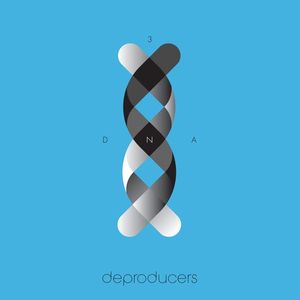 Carl Sagan's Cosmic Calendar and this Compact history of life by Deproducers certainly have very illustrious literary ancestors, from Lucretius' De rerum natura to the amazing Petite cosmogonie portative by Raymond Queneau (“A Pocket Cosmogony”, 1950). To the latter goes my special reference, a true universal cosmic calendar in verse, in which, on an admirable scale, the entire human history is compared to that of the Universe and is described with only two verses at the beginning of the sixth and last canto :
Carl Sagan's Cosmic Calendar and this Compact history of life by Deproducers certainly have very illustrious literary ancestors, from Lucretius' De rerum natura to the amazing Petite cosmogonie portative by Raymond Queneau (“A Pocket Cosmogony”, 1950). To the latter goes my special reference, a true universal cosmic calendar in verse, in which, on an admirable scale, the entire human history is compared to that of the Universe and is described with only two verses at the beginning of the sixth and last canto :
Less than two seconds before the midnight of 31 December, in the calendar of Life: there we are all of us, in those two seconds. Two seconds of history in a whole year. [RV]
"There is poetry behind science. This is the lesson against racism. All humans derive from a small group of African pioneers who started migrating: we have been migrating for two million years, we are all very close cousins. Biologically, there are no races. DNA means unity in difference: we are all relatives, and all different. We have more than 98% of DNA in common with chimpanzees, 99.9% with two humans taken at random. "[Deproducers, DNA]
Riccardo Venturi, 08-02-2020 00:31
 Carl Sagan's Cosmic Calendar and this Compact history of life by Deproducers certainly have very illustrious literary ancestors, from Lucretius' De rerum natura to the amazing Petite cosmogonie portative by Raymond Queneau (“A Pocket Cosmogony”, 1950). To the latter goes my special reference, a true universal cosmic calendar in verse, in which, on an admirable scale, the entire human history is compared to that of the Universe and is described with only two verses at the beginning of the sixth and last canto :
Carl Sagan's Cosmic Calendar and this Compact history of life by Deproducers certainly have very illustrious literary ancestors, from Lucretius' De rerum natura to the amazing Petite cosmogonie portative by Raymond Queneau (“A Pocket Cosmogony”, 1950). To the latter goes my special reference, a true universal cosmic calendar in verse, in which, on an admirable scale, the entire human history is compared to that of the Universe and is described with only two verses at the beginning of the sixth and last canto :Le singe sans effort le singe devint homme
lequel un peu plus tard désagrégea the atom.
"The monkey, effortlessly, became the man,
who a little later disintegrated the atom."
lequel un peu plus tard désagrégea the atom.
"The monkey, effortlessly, became the man,
who a little later disintegrated the atom."
Less than two seconds before the midnight of 31 December, in the calendar of Life: there we are all of us, in those two seconds. Two seconds of history in a whole year. [RV]
"There is poetry behind science. This is the lesson against racism. All humans derive from a small group of African pioneers who started migrating: we have been migrating for two million years, we are all very close cousins. Biologically, there are no races. DNA means unity in difference: we are all relatives, and all different. We have more than 98% of DNA in common with chimpanzees, 99.9% with two humans taken at random. "[Deproducers, DNA]
COMPACT HISTORY OF LIFE
In 1966,
the astronomer Carl Sagan, to facilitate understanding
of events spread over very long times,
published the Cosmic Calendar.
The whole history of Universe from Big Bang to today
was compared to a calendar year.
Billions of years compressed between the 1st of January
and the midnight of 31 December.
Similarly, it is possible to imagine and draw
a compact scale history of Life.
On the 1st of January, as soon as the right environmental conditions are reached,
Life on Earth begins.
Immediately after, the first DNA-based replicant appears,
the common ancestor of all existing forms of life.
Later, the first cyanobacteria cause photosynthesis and form the atmosphere
which, saturated with waste oxygen, poisons almost all previous organisms.
A catastrophe for all existing life forms,
but, at the same time, a blessing for the future human race.
On 27 May, the first cells provided with a nucleus appear.
On 2 November, the first multicellular organisms.
Until the end of October,
Life on Earth consists only of single-cell organisms.
On 8 November, protochordates, the ancestors of vertebrates, appear.
On 15 November, DNA creates the plants.
On 24 November, vertebrates move to land;
before this moment, Life had been developing almost exclusively in water.
On 9 December, the era of dinosaurs begins
and ends abruptly on Christmas eve, towards evening.
On 26 December, primates differentiate from mammals.
Now it's 31 December, the last day of the year,
and, at 10 am, the common ancestor between us and chimpanzees begins to evolve.
Only at 11:32 pm, the species Homo sapiens originates in Africa.
At 11:58 pm there's still no trace of civilization.
At 11:58:20 pm, the last ice age ends,
and man invents agriculture.
At 11:59 pm or so
History, as we know it, begins.
In 1966,
the astronomer Carl Sagan, to facilitate understanding
of events spread over very long times,
published the Cosmic Calendar.
The whole history of Universe from Big Bang to today
was compared to a calendar year.
Billions of years compressed between the 1st of January
and the midnight of 31 December.
Similarly, it is possible to imagine and draw
a compact scale history of Life.
On the 1st of January, as soon as the right environmental conditions are reached,
Life on Earth begins.
Immediately after, the first DNA-based replicant appears,
the common ancestor of all existing forms of life.
Later, the first cyanobacteria cause photosynthesis and form the atmosphere
which, saturated with waste oxygen, poisons almost all previous organisms.
A catastrophe for all existing life forms,
but, at the same time, a blessing for the future human race.
On 27 May, the first cells provided with a nucleus appear.
On 2 November, the first multicellular organisms.
Until the end of October,
Life on Earth consists only of single-cell organisms.
On 8 November, protochordates, the ancestors of vertebrates, appear.
On 15 November, DNA creates the plants.
On 24 November, vertebrates move to land;
before this moment, Life had been developing almost exclusively in water.
On 9 December, the era of dinosaurs begins
and ends abruptly on Christmas eve, towards evening.
On 26 December, primates differentiate from mammals.
Now it's 31 December, the last day of the year,
and, at 10 am, the common ancestor between us and chimpanzees begins to evolve.
Only at 11:32 pm, the species Homo sapiens originates in Africa.
At 11:58 pm there's still no trace of civilization.
At 11:58:20 pm, the last ice age ends,
and man invents agriculture.
At 11:59 pm or so
History, as we know it, begins.
×
![]()
Note for non-Italian users: Sorry, though the interface of this website is translated into English, most commentaries and biographies are in Italian and/or in other languages like French, German, Spanish, Russian etc.

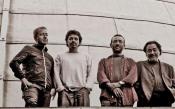

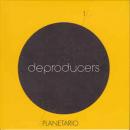
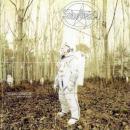
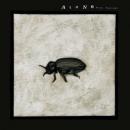
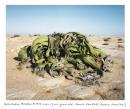

Cosma / Maroccolo / Casacci / Sinigaglia / Pievani
Album / Albumi: DNA
lequel un peu plus tard désagrégea l'atome.
“La scimmia, senza sforzo, diventò l'uomo,
che un po' più tardi disgregò l'atomo.”
Meno di due secondi prima della mezzanotte del 31 dicembre, nel calendario della vita: in quei due secondi, ci siamo noi tutti. Due secondi di storia in un intero anno.
“Dietro la scienza c’è poesia. È la lezione contro il razzismo. Tutti gli esseri umani derivano da un piccolo gruppo di pionieri africani che hanno iniziato a migrare: noi migriamo da due milioni di anni, siamo tutti cugini strettissimi. Sul piano biologico non esistono razze. Quella del DNA è una storia di unità nella diversità: siamo tutti parenti e tutti differenti. Con gli scimpanzé abbiamo più del 98% del DNA in comune, tra due esseri umani presi a caso il 99,9%.” [Deproducers, DNA]